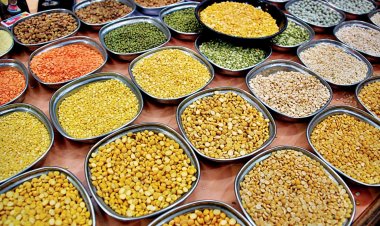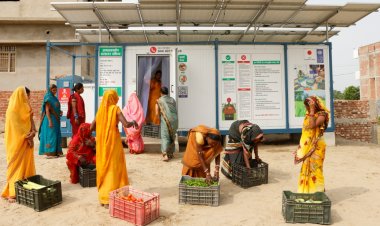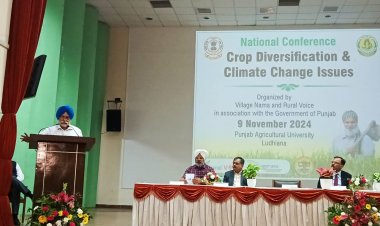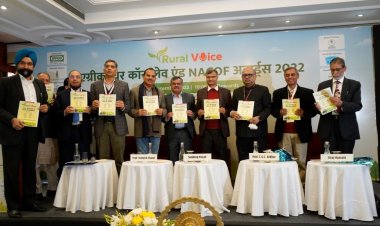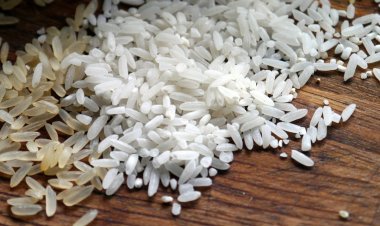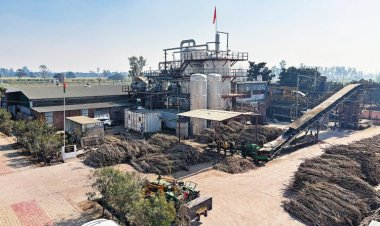Of Rs 7.50 lakh crore capex, share of agriculture below Rs 140 crore; sector crying for investment in Budget
Boosting consumption by giving money to the hands of consumers and production by encouraging investment by industry are the mantras being chanted for taking the growth trajectory of the Indian economy towards 7 per cent and above. This mantra should include agriculture and the rural economy. Which is not the case at present.

Over and above the allocations for specific heads in the Union Budget, what also matters critically is the quality of expenditure. Is the taxpayers' money being spent on revenue heads, put simply day-to-day expenditure, or towards building future assets by raising the capital expenditure? Capital expenditure is reflective of investment for reaping future benefits. Alas, when it comes to agriculture and the entire rural landscape, the Union Budget does no justice to the quality of expenditure. This is borne out by the Budget numbers year after year. This means no new investment in agriculture is taking place.
The Budget for 2022-23 was hailed for committing a substantial amount of Rs 7.50 lakh crore on capital expenditure, which is about 20 per cent of the total expenditure of about Rs 40 lakh crore by the Central Government. It was no doubt a commendable commitment by Finance Minister Nirmala Sitharaman. But then, where does agriculture, including fertilizers, animal husbandry, fisheries, entire rural development and Panchayati Raj, figure in claiming its share of the total capital expenditure of the Central Budget? It was a very disappointing number! Or rather it would not be an exaggeration to say there was no capital expenditure for these ministries. How else do we describe the measly figure of Rs 138 crore adding up for these heads out of the total capex of Rs 7.50 lakh crore? This also meant that almost all the allocations for the key agri-related ministries and departments — fertilizers, animal husbandry, fisheries, entire rural development and Panchayati Raj — totalling about Rs 3.83 lakh crore were provided for revenue expenditure, leaving no funds for capital formation.
We only hope that the template of 2022-23 is not 'Ctrl+C, Ctrl+V'ed (copied and pasted) for the Budget of 2023-24. Well, this is only hope. Given the fact that this is going to be the last regular Budget before the general elections of 2024, there are expectations of headline-making, populist numbers. We may see some revisions in PM Kisan Samman and MNREGA. Schemes like income support of Rs 6000 per year per farmer are much-needed relief measures, given the distress in the agrarian economy. But agriculture and the entire rural economy is crying for big-time investment. And that is what is completely lacking among the priorities of the policymakers in Krishi Bhawan and the South Block.
Drones and start-ups are making quite a buzz in the agriculture sector. Companies are being encouraged to manufacture drones with subsidies from the government. These drones would be tasked with spraying pesticides flying over the crops and also liquid fertilizer. Seems quite an encouraging and forward-moving step. But it would be fair to do widespread pilots and field trials before we see drones flying all over the fields of sugarcane, wheat, rice and many other crops. Experts do not question the intention. But they do bother and wonder how pesticide sprayed from the height of a drone would reach the stem or root of a plant! Pests do not sit only on the top of the leaves; they affect the lower part of the plant as well. The Indian Council for Agriculture Research (ICAR) and other prestigious government institutions and agriculture universities should step in before allowing free-for-all droning around and over villages that would inflict the villagers with hazardous chemicals.
There are suggestions coming in for a PLI (Production Linked Incentives)-like scheme for agriculture on the lines of the industries, including the big-time multinational companies who have received committed government support exceeding Rs 2 lakh crore for new investment in 13 different sectors of manufacturing. Agriculture, including dairy, fisheries and other livestock, does deserve a PLI scheme bigger than the one being rolled out for the industry. At least a beginning should be made for the entire package of millet crops which the government is promoting under the aegis of the United Nations (UN), which declared 2023 as the Year of the Millets.
We keep hearing about the mountains of garbage in cities and the challenges of urban waste management. But rural waste management is completely ignored. Villages are littered with untreated sewage mixed with dangerous plastic waste. Rural waste management is still doable at the village level with the help of NGOs and even start-ups. The start-ups need not be private equity (PE)-funded and government-supported fancy outfits, doing cash burns in millions of dollars. We need entrepreneurs at the village level in performing tasks like rural waste recycling and sewage treatment micro-financing.
When it comes to budgeting, unrealistic and lower allocations should be avoided. Last year, the global energy and raw material prices were very much evident at the time of the presentation of the Budget. Yet the outlays of Rs 1.05 lakh crore for fertilizer subsidy were much below the projected requirement. The result was: We kept hearing noise about food and fertilizer subsidies overshooting the Budget, needing supplementary grants of another Rs 1 lakh crore by Parliament. Now that is not good budgeting!
Boosting consumption by giving money to the hands of consumers and production by encouraging investment by industry are the mantras being chanted for taking the growth trajectory of the Indian economy towards 7 per cent and above. This mantra should include agriculture and the rural economy. Which is not the case at present.



 Join the RuralVoice whatsapp group
Join the RuralVoice whatsapp group



















